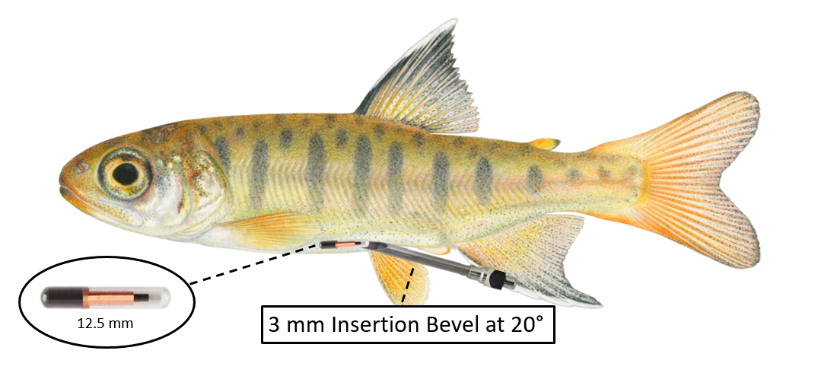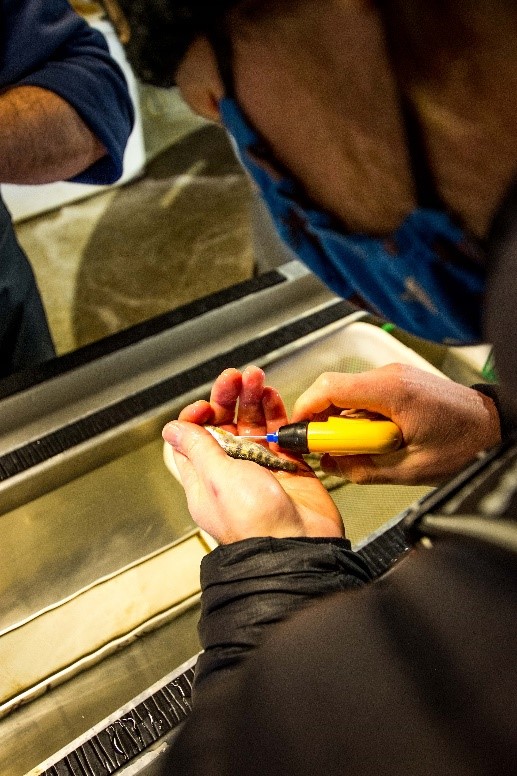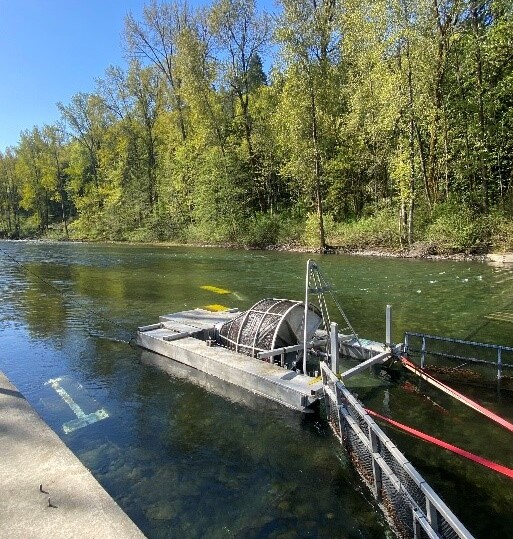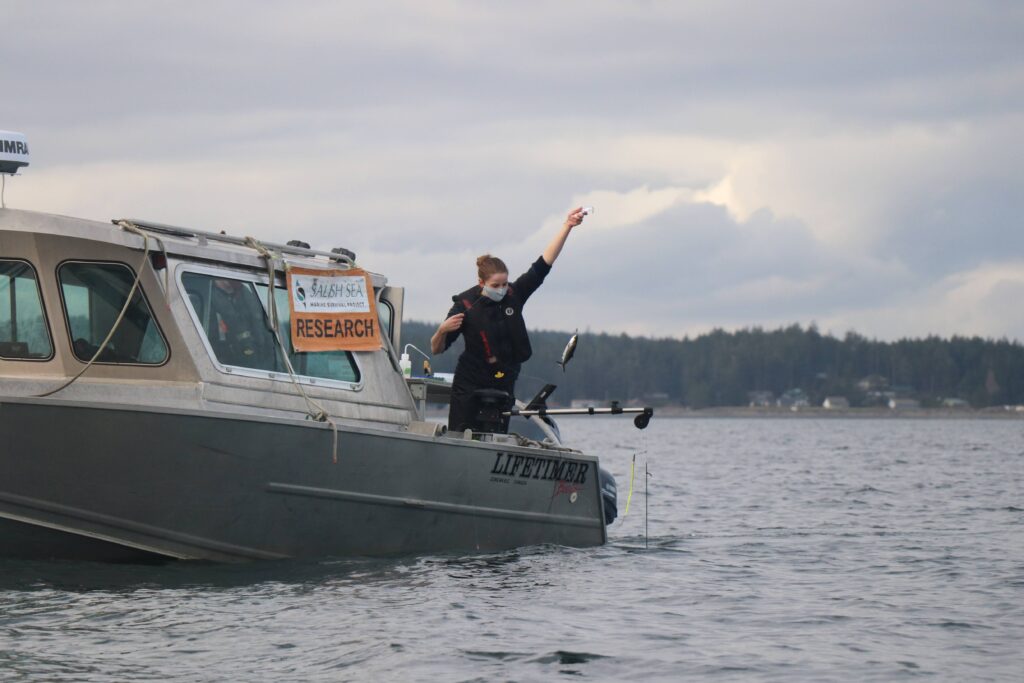The Bottlenecks Program’s goals of understanding stage-specific survival for the early life stages of Chinook and coho salmon are achieved by PIT tagging a subset of our target populations at specific early life stages (freshwater, estuary, early marine fall, early marine winter).

PIT tags are small passive tags about the size of a grain of rice (FDX-B, 12 mm in length); they do not have a battery, so they never expire. PIT tags have a unique identification code that allows researchers to track the fate of individual fish. Tags are activated and their unique codes transmitted when they come into contact with the electromagnetic field created by the PIT antennas; these can be either arrays stretched across river bottoms or a hand-held scanning devices.
When PIT tagging salmon, the fish are first lightly anesthetized and basic information is collected, such as species, the size of the fish, weight, and any symptoms of stress or prior injury. Small tissue samples are also collected from fish captured at sea and submitted for genetic analysis to identify which stocks have been tagged. The PIT tags themselves are inserted into the body cavity of the fish to carry with them on their journey. After tagging, the fish are allowed to recover before being returned to the environment from which they were taken (i.e. hatchery ponds/tanks, river, estuary, ocean).

At the Quinsam, Puntledge, Big Qualicum, Little Qualicum, Nanaimo, Cowichan, and Goldstream hatcheries. Tagging is done in partnership with DFO’s Salmon Enhancement Program (SEP) and community hatcheries. Coho are typically tagged through the fall and winter months and released into earthen ponds for over winter rearing. Steelhead are tagged in January of each year, and Chinook are tagged in the spring from April to June, shortly before their release. Coho and steelhead are typically released in early May with later coho releases occurring at the beginning of June, while Chinook are released from the end of April to early June. The number of fish tagged varies by hatchery but approximately 5,000 fish from each species are tagged at each hatchery.
In addition to the central Chinook and coho stage specific survival study, there have been several smaller studies aimed at understanding and optimizing hatchery practices. For example, hatchery tagging has taken place on cohorts of steelhead at the Robertson Creek Hatchery which are then released in different locations to see if a change in release strategy can improve survival (more on this can be found in this report). Another study has looked at coho survival in earthen ponds over winter, to help inform marine survival estimates (more can be found in this report).

We also tag juvenile salmon and trout during their downstream migration to the ocean, targeting the early freshwater life phase of wild salmon to compare to the hatchery tagged cohorts. River tagging is done on the Cowichan, Englishman, and Nanaimo rivers. Fish are captured using rotary screw traps (RST), smolt traps, Wolf traps, and beach seines. The river tagging takes place from late March to July.
Upon reaching the ocean, juvenile salmon and trout enter the estuary. This area can serve as a critical rearing and foraging area as they acclimatize to ocean conditions and grow before continuing their migration to sea. We use beach seines in the Nanaimo and Comox estuaries to capture juveniles in the nearshore in late spring from May through June. Tagging at these locations helps us to separate the freshwater and marine life stages and allows us to sample and tag salmon later into the spring when river tagging would no longer be possible due to warmer river temperatures.


In the ocean, we are able to capture juvenile salmon using a novel fishing technique: “microtrolling”. Microtrolling involves trolling with a set of miniaturized lures on a downrigger for five-minute sets. Microtrolling efforts run from late August to March to capture and tag salmon throughout their first marine fall and winter.
By tagging fish over this period, not only are we adding another key life stage to our stage-specific survival analysis, but we can investigate overwinter trends in mortality. Some of these are also used to tell us more about the winter ecology of Chinook salmon specifically through diet content, growth, and other health analyses.
Marine tagging is challenging, and our small team can only cover so much water and tag so many fish. But, thanks to a small team of dedicated volunteer anglers, our program is able to cover a much wider area, from the southern Gulf Islands up to the Discovery Islands, and tag enough fish for our analyses.
The interactive dashboard embedded below shows the catch-per-unit-effort and genetic stock information for the Chinook and coho captured by mircotrolling for the Bottlenecks Program. You can explore the data here here or access this dashboard directly